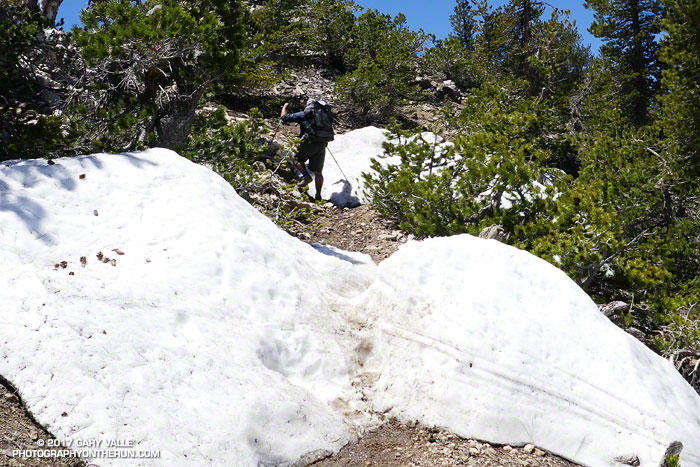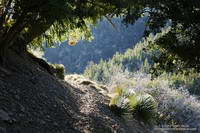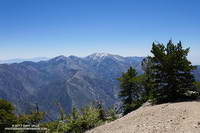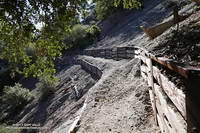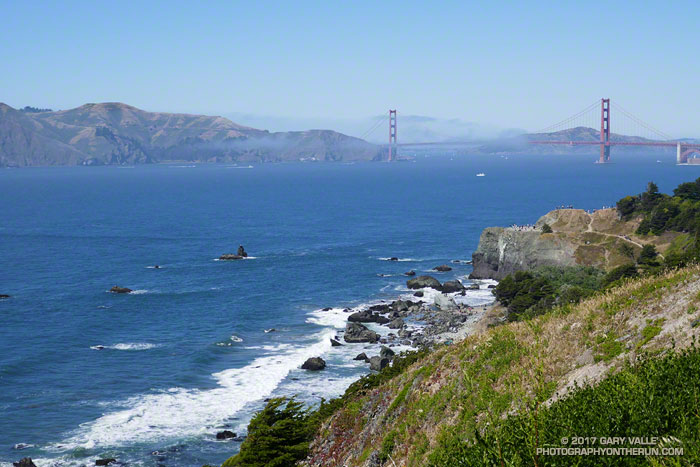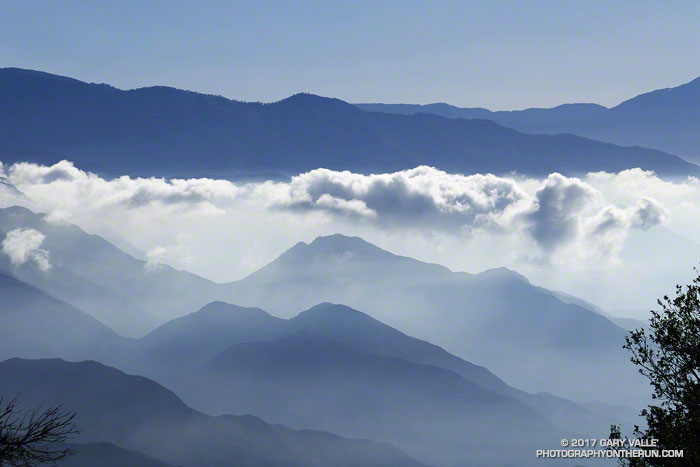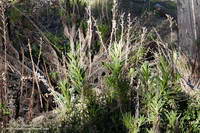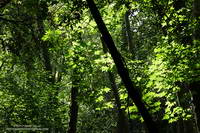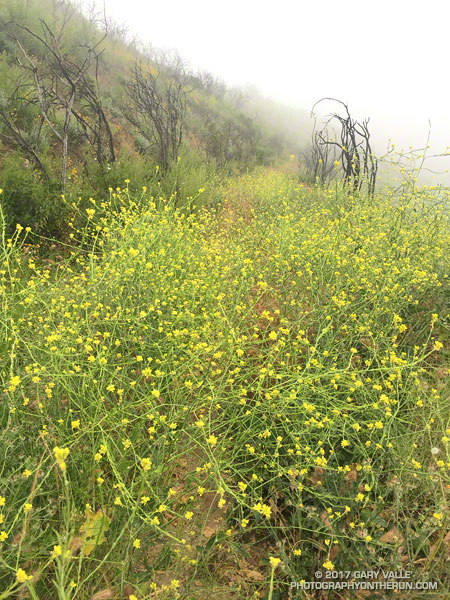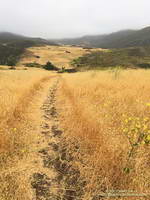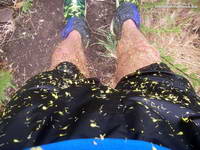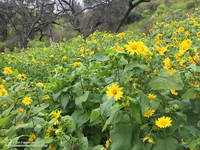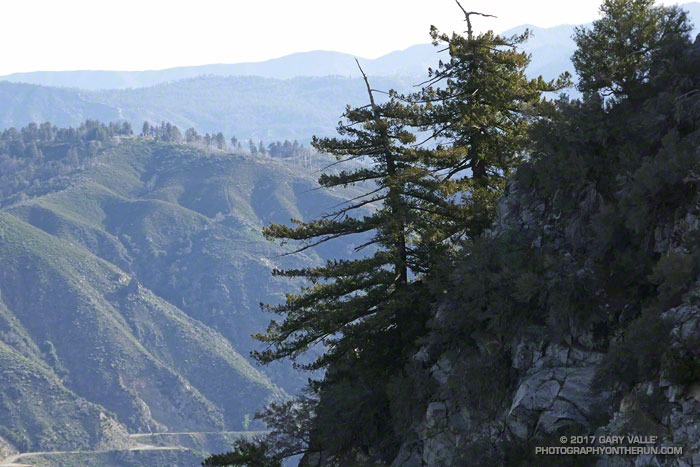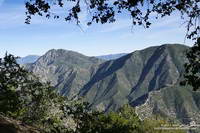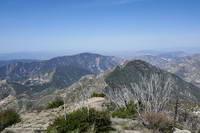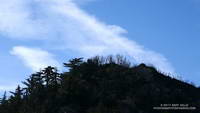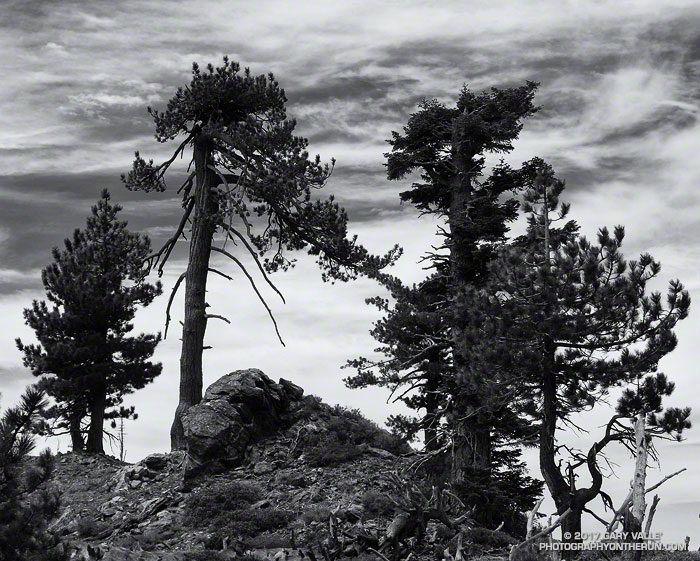
I rounded the corner, driving from deep shade into the golden glare of the rising sun. There was almost no traffic on Angeles Crest Highway. Up ahead, in the shade of some trees, there was something in the road. Was it a rock or a pine cone? Driving into the sun it was hard to tell. At this time of the morning — before the CalTrans truck has swept the road — one small rock can ruin your whole day. Getting to the trailhead unscathed is always the first challenge of the day.
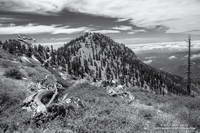
Today, Craig and I were planning to do a point to point run from Inspiration Point to Islip Saddle — one of the best stretches of trail in the San Gabriel Mountains.
PCTA volunteer Ray Drasher often takes care of clearing the trees from this section of the Pacific Crest Trail. It’s quite an undertaking to get the required stock and equipment to the trailhead and then cut trees spread over several miles of trail. Because of conflicting reports, Ray wasn’t sure whether there were trees still on the trail or not. We’d let him know after the run.
On the drive up you could see it was going to be a spectacular day in the Angeles high country. A low pressure trough moving through central California had pulled in the marine layer and a tumultuous ocean of cloud reached from the south-facing canyons far out over the Pacific.
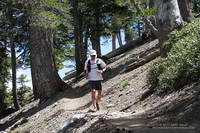
I drove through the double tunnels at Mt. Williamson and then around a left-hand curve. Up ahead I could see the northwest ridge of Mt. Islip dropping down to Islip Saddle. What the heck? Orange cones? The gate is closed? The HIGHWAY is closed? That didn’t make sense; the Winter closure had ended weeks before.
After parking, I talked to a hiker who said it was closed for “road work.” I assumed there must have been a rock slide in one of the problematic areas between Islip Saddle and Vincent Gap. Later I learned the problem was a “sink hole” west of the Grassy Hollow Visitor Center.
After Craig arrived we discussed route options to Mt. Baden-Powell. Either we did the South Fork loop, which I’d done a couple weeks before, or we did an out and back on the PCT. We opted for the out and back.
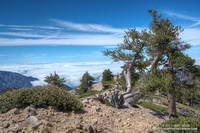
The run was as spectacular as expected. The visibility above the deck of stratus was at least 100 miles. San Bernardino Peak, San Gorgonio Mountain and San Jacinto were easy marks to the east and Owens Peak and the Southern Sierra could be seen to the north. Before it was immersed in a tide of cloud, the summit of Santiago Peak (Saddleback) had been visible to the south. High clouds and a gusty westerly wind kept the temperatures moderate. Only one very small patch of snow remained on the trail.
I’d hoped to be able to tell Ray the trees had been cleared from the trail, but no — they were still there. He said the next time I ran there, they would be gone. Thanks Ray!

